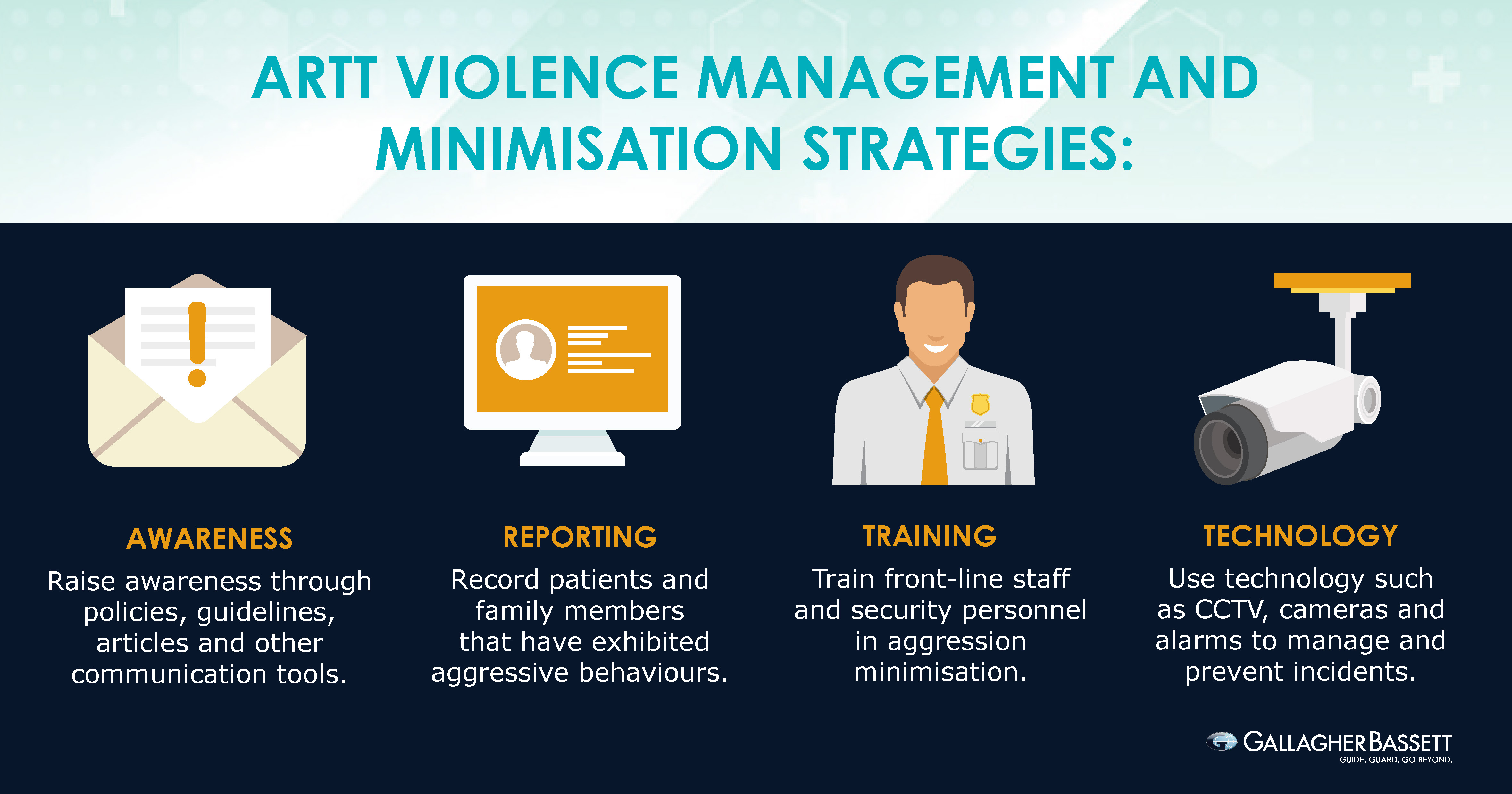Work in the healthcare industry is a noble profession, but while a career in this field offers many rewards and benefits, doctors, nurses and other healthcare professionals also face a number of workplace hazards.
One of the biggest challenges for workers in this field, particularly in hospital settings, is occupational violence. Verbal abuse, physical assaults – such as kicking, strangling, and punching, and violence involving knives, guns, and other weapons often take place. Nurses, particularly those who work in emergency and mental health services departments, face the most significant risks of occupational violence.
Different studies show that occupational violence in hospitals and other healthcare facilities is constantly increasing. It is certainly a pressing concern that administrators need to address, but what can hospitals do to manage and minimise workplace violence?
One strategy is to use the ARTT (Awareness, Reporting, Training, Technology) violence management and minimisation strategies:

Awareness
Acknowledging and being aware of the fact that occupational violence occurs is the first step any hospital management needs to take to reduce such incidents. Hospitals can raise awareness about violence by establishing and including policies and guidelines in their Quality Improvement Plans or employee/staff handbook. Posting articles about the issue on the hospital’s blog or banners on its website, as well as more traditional channels like distributing brochures or putting up posters, can all help raise awareness.
Reporting
Hospitals can create a reporting system for workplace violence incidents. This can include keeping a record of patients with aggressive or violent behaviours, as well as information about patients and family members of patients who have assaulted a hospital staff in the past. This way of flagging danger can help identify trends and patterns that can then be managed, ultimately helping to reduce violence.
Training
Occupational violence in hospitals can also be managed and reduced through training of front-line staff. Increase the knowledge and skills of their security guards by providing them with training in violence and aggression minimisation. They may be unarmed, but with proper training, they will know how to handle a threat or an assailant. Hospital staff can also be trained in crisis intervention and handling.
Forming a threat-management team as part of the hospital’s workplace violence prevention program is also an effective strategy. This group ideally consists of representatives from the security, legal, human resources, and psychiatry departments. Law enforcers can also be part of the team. These representatives should be trained on how to recognise threats and handle violence.
Technology
Managing and preventing workplace violence in the age of technology is more effective. By equipping hospitals with state-of-the-art CCTV cameras and alarms, authorities will be able to monitor and thwart any danger or violence immediately. The staff can also use smartphone, tablet, and computer apps or software programs designed to help them should any crisis or violence arise.
As the healthcare industry in Australia booms, it is essential to pay close attention to occupational violence and find ways to manage, minimise, and prevent this problem. With the help of the tips mentioned, hospitals can be a safe, violence-free place for healthcare professionals, who provide care and service to people in need.
If you would like to have a discussion with GB about what action plans are available to improve the wellbeing of your workplace, contact us today.

 1300 975 609
1300 975 609


 Search
Search


 1300 975 609
1300 975 609

